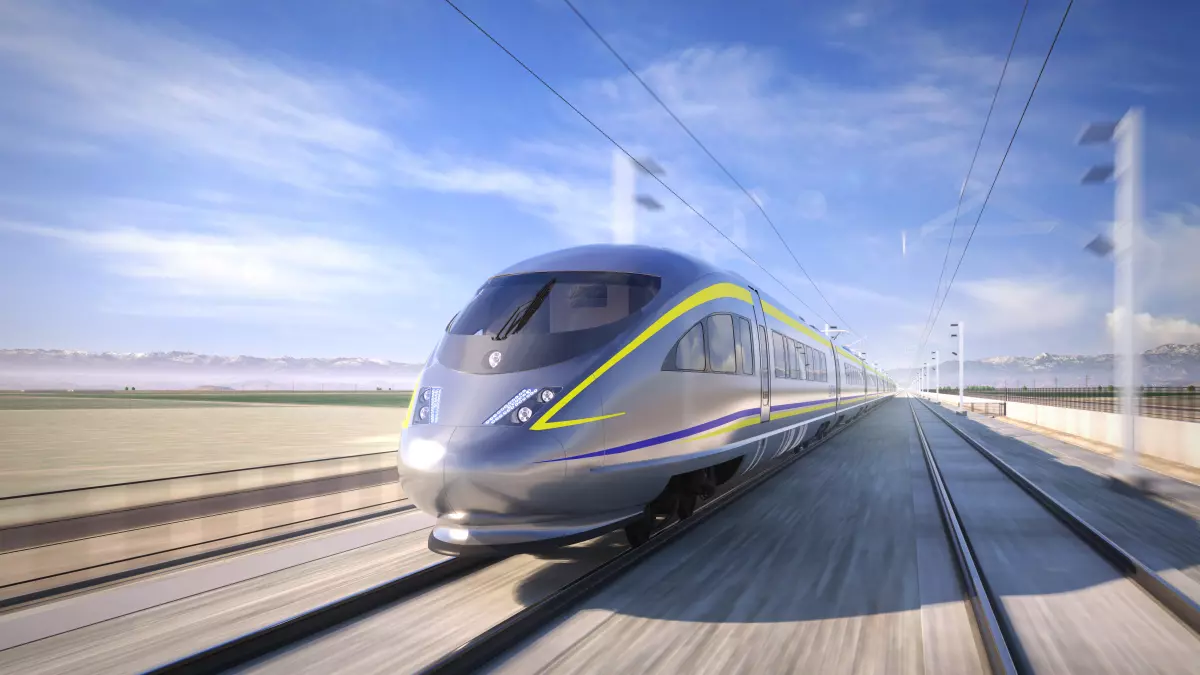Environmental review of Burbank-Palmdale high-speed rail released

A rendering of the kind of electrified high-speed rail train California plans to run in the San Joaquin Valley. (California High-Speed Rail Authority)
Colleen Shalby
Los Angeles Times
May 24, 2024
Since the earliest plans for the California High-Speed Rail Project, the segment connecting the Central Valley to Los Angeles has been fraught with controversy and technical conundrums. Political pressure and other concerns ultimately pushed the route away from the Grapevine and over the Tehachapis to the Antelope Valley, where it is planned to run along the State Route 14 corridor into the San Fernando Valley.
A final environmental review for a critical 38-mile leg from Palmdale to Burbank was released Friday. If approved by the authority’s board of directors next month, the entire route between Los Angeles and San Francisco would be environmentally cleared for construction. The California High-Speed Rail Authority’s board of directors is expected to make a decision in late June on whether to accept the document, which includes several possible variations of the route with consideration to concerns about cost, aesthetics and environmental impacts raised by community members over the past two years. “This environmental document is the culmination of years of analysis and stakeholder engagement and is a huge milestone in connecting high-speed rail between two of our major metropolitan centers, San Francisco and Los Angeles,” outgoing authority Chief Executive Brian Kelly said in a statement.
. . . .
The preferred route from Palmdale to Burbank is a 38-mile stretch that would connect the Palmdale Transportation Center to the Hollywood Burbank Airport. It would include four tunnels ranging from about 12 to 13 miles in length and would operate underground through the Acton area, the Angeles National Forest and the San Gabriel Mountains National Monument in order to reduce impacts on communities and environmental resources. The trip between the two stations would take about 15 minutes.
. . . .



